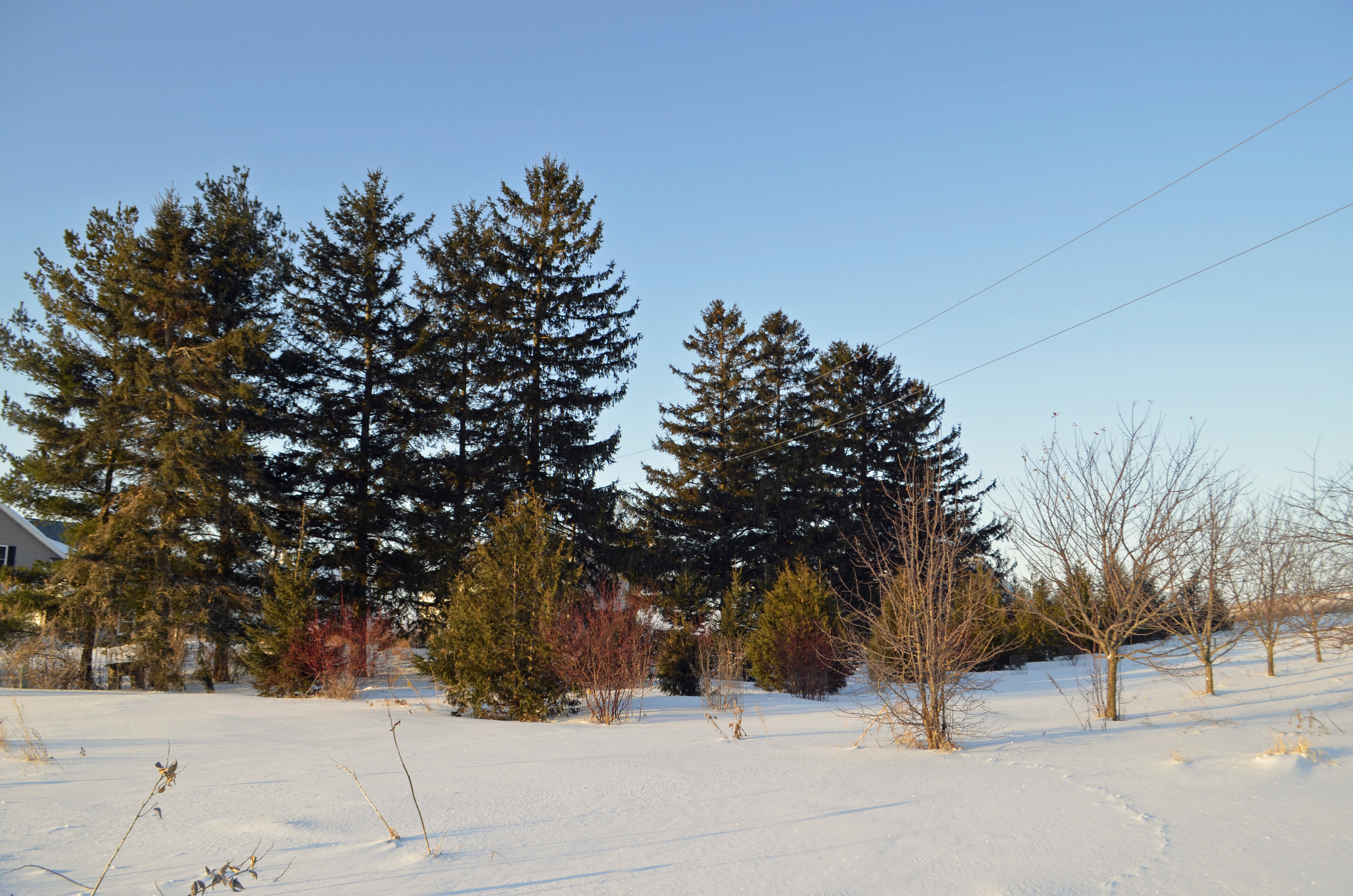The 2019 Great Backyard Bird Count in a Tough Winter
We always look forward to participating in the Great Backyard Bird Count (GBBC). This year we kept close watch at the bird feeders at both Madison Audubon residences at Goose Pond Sanctuary on Monday, February 18, the last of the four-day time period. The Martins also counted birds at feeders at their cabin (Wildland) north of Rio in Columbia County on Sunday, February 17.
The GBBC gives us a snapshot of bird usage at our feeders in late winter. Despite the name, birds can also be counted and reported from anywhere, not just backyards. Nine of the 14 species observed at three feeders were in the top 10 species recorded world-wide in 2018 (see spreadsheet below).
Factors contributing to the higher species count and higher number of individuals included more diverse the habitat, the number and types of feeders, and the variety of seeds present. We find that the best seeds for us are black-oil sunflowers, medium sunflower chips, white millet, and suet. This year our sunflower chip feeders were new Wild Birds Unlimited Eco-clean feeders, which reduce disease transmission when birds congregate in high densities.
On Thursday afternoon, February 21, GBBC reports were still being entered but at that time, world-wide totals included 178,200 (160,000 in 2017) checklists, 6,293 (6,031) species, and 28,700, 000 (25,300,000) birds counted as part of the event. This is an impressive number that reflects the amount of people interested in birds, and more people participated this year than last. In Wisconsin, bird watchers submitted 2,454 (2,400) checklists and reported 115 (121) species.
Last year we had good numbers of common redpolls and pine siskins, which are very uncommon this year in southern Wisconsin. The eight turkeys at the Wildland cabin were feeding on sunflowers at the bird feeders and on apples in the orchard. The Goose Pond wildlife food plot of sorghum and sunflowers is helping 250 tree sparrows and 25 ring-necked pheasants make it through the winter.
Shelter is another critical need for birds in the winter. The Kampen Road residence contains an “old growth” Norway spruce windbreak and mature pines, and spruces on the neighbor’s land at the Martin’s cabin provide birds with ideal winter roosting cover. Nine years ago at the Kampen Road residence we planted Norway spruce, white cedar, red osier dogwoods, apples and crab apples. These plantings offer additional cover and also serve as a windbreak.
The Kamepn Road residence windbreak offers important shelter for birds and other wildlife. Photo by Mark Martin
We are planning on planting more woody species this year and encourage others to provide habitat around their residences. In addition to creating cover for the birds, the trees help stop the wind and reduced energy costs.
Thanks to everyone that feed birds already. If you live in suitable habitat we encourage you to start feeding them as well. A friend mentioned the importance of feeding the birds and asked us “how would you like to go to the store in winter and find the shelves empty.” The color and variety of species brighten our winter days, and make us feel good knowing that we can provide them with quality habitats and nutritious food.
The winter weather has been tough on other birds as well. On Wednesday January 30, Jerry Schulz who works at the UW Arlington Research Farms was driving on Goose Pond Road when he saw an eagle in the road "jumping up and down" close to the Manthe farm. As he approached he could see an adult eagle, and it appeared the eagle had just killed a snowy owl. The adult eagle flushed carrying the owl. That day felt like the arctic with a low of - 30 degrees and a high of -12 with -50 wind chill. Snowy owls can withstand the weather, but we have no idea why the eagle was able to take the owl or why the owl was in this location. It is possible that the owl had been hit by a vehicle or had health problems. It is sad to lose one of our feathered friends, and very surprising to learn of this report.
Written by Mark Martin and Sue Foote-Martin, Goose Pond Sanctuary resident managers














